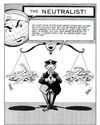試す 金 - 無料
HOW THE WAR ON SPRAWL CAUSED HIGH HOUSING PRICES
Reason magazine
|April 2022
REGULATION

HIGH HOUSING PRICES have reached crisis proportions in much of the country. You can blame the war on sprawl for that.
Since the 1960s, planners have convinced many state and regional governments to limit the physical spread of urban areas. They called this “growth-management planning,” and the most common growth-management tool was an urban growth boundary. Outside such boundaries, development was practically forbidden.
About 99 percent of Oregon, for example, is outside of an urban growth boundary. In most of those places, families cannot build houses on their own land unless they own at least 80 acres, actually farm it, and have thereby earned $40,000– $80,000 per year (depending on soil productivity) in two of the last three years.
Hawaii passed the nation’s first growth-management law in 1961. By 1970, the state had the most expensive housing market in the country. A standard measure of housing affordability is the price-to-income ratio: median home price divided by median family income. Hawaii’s ratio in 1970 was more than 3, while in every other state it was 2.4 or less. California’s ratio was 2.2.
In 1963, the California legislature gave cities control over what happened outside their limits. In the 1970s, a slow-growth movement prompted many cities to draw urban growth boundaries, effectively forcing all new development to happen within their boundaries. By 1980, the price-to income ratios in many California urban areas were above 3; some were above 4.
Oregon passed a growth-management law in 1973, Florida in 1985, New Jersey in 1986, and Maryland and Washington in 1992. Housing affordability declined after all these laws were implemented.
このストーリーは、Reason magazine の April 2022 版からのものです。
Magzter GOLD を購読すると、厳選された何千ものプレミアム記事や、10,000 以上の雑誌や新聞にアクセスできます。
すでに購読者ですか? サインイン
Reason magazine からのその他のストーリー

Reason magazine
A Nostalgic Read for Foreign Policy Elites
IF YOU WERE looking for a human avatar of America's unipolar moment, you couldn't do better than Michael McFaul. Picture a youthful, energetic McFaul with a newly minted Ph.D. bounding into the suddenly post-Soviet space of the early 1990s, full of bright ideas about democracy and faith in the end of history. As McFaul himself puts it, 1991 \"was a glorious moment to be a democratic, liberal, capitalist, multilateralist, and American....I was treated like a rockstar.\"
4 mins
January 2026

Reason magazine
TRUMP IS DEPORTING ENTREPRENEURS
THE TRUMP ADMINISTRATION'S MASS DEPORTATION EFFORT IS ROBBING THE U.S. OF IMMIGRANT BUSINESS OWNERS AND THEIR CONTRIBUTIONS.
9 mins
January 2026
Reason magazine
The First Information Revolution
PRINTING PRESSES AND LIBRARIANS INTERPRETED CENSORSHIP AS DAMAGE AND ROUTED AROUND IT.
11 mins
January 2026

Reason magazine
What Would Bill Buckley Do?
THE NATIONAL REVIEW FOUNDER'S FLEXIBLE APPROACH TO POLITICS DEFINED CONSERVATISM AS WE KNOW IT.
7 mins
January 2026

Reason magazine
MAHA Mandates Food Labels
BURDENSOME FOOD LABELING mandates were once the province of Democrats, who pushed for calorie count requirements on restaurant menus and insisted packaged food must feature warnings about genet- ically modified ingredients and trans fats. Now it's Republicans leading the charge- with equally foolish results.
2 mins
January 2026

Reason magazine
IS JAKE TAPPER DOOMED?
THE CNN ANCHOR ON THE WAR ON TERROR, THREATS TO FREE SPEECH, AND THE FUTURE OF MEDIA
14 mins
January 2026

Reason magazine
REPUBLICAN SOCIALISM
THE TRUMP ADMINISTRATION IS BUYING STAKES IN COMPANIES. THAT NEVER ENDS WELL.
13 mins
January 2026

Reason magazine
A Taste of Capitalism in Warsaw
WARSAW, POLAND, IS a living museum of economic systems. It's a city where concrete reliefs of stoic factory workers decorate a building that now houses a Kentucky Fried Chicken, where a Soviet-era apartment block stands beside a glass tower filled with coworking spaces.
2 mins
January 2026

Reason magazine
Robert Crumb's Roving Art and Life
IN THE SPRING of 1962, an 18-year-old Robert Crumb was beaned in the forehead by a solid glass ashtray. His mother, Bea, had hurled it at his father, Chuck, who ducked. Robert was bloodied and dazed, once again a silent and enraged witness to his family's chaos.”
5 mins
January 2026

Reason magazine
THE HOWARD ROARK OF COMICS
SPIDER-MAN CO-CREATOR STEVE DITKO WAS A GREAT EXAMPLE OF, AND DIRE WARNING TO, OBJECTIVIST POP ARTISTS.
12 mins
January 2026
Translate
Change font size

